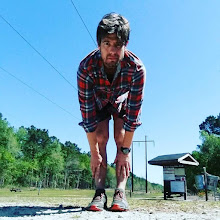i. Intro, smells like coffee.
I was the production manager in the saw mill for Dean Hardwood. Our operation was shoved on the side of the Cape Fear River, beneath the Isabella Holmes bridge. I directed a crew of about twenty men and women, with daily fluctuation in staff number, daily fluctuation of who showed up. We had around 15000 square feet of stacked raw materials, featuring all manner of lumber in all in various stages of preparation. We had finished flooring: black walnut, sapele, red & white oak, afrormosia, curly heart pine & yellow pine, Carribean pine, African and Philippine Mahogany, Zebra wood ... musical fukn names. I worked with woods I had never seen nor have I seen them since. They were beautiful and distinct, ranging in color from burled sienna to deep dusky red to oiled pumpkin to sunshine yellow. We ran familiar woods as well, like oak with her clean, even gradations.
The fragrances also varied wildly. Not unlike crushing mint or basil, the planing and cutting of various species realeased an olfactory peak. There were woods that smelled of wildflower crushed in coffee. African woods released spicy earths, wild animal skin, rich wet soils, dry sweetness like an oaked chardonnay, the burnt perfumes of Sapele.
ii. Teak
Finally, a wood like no other: Teak. Teak which conveyed an unmistakable odour ... a Gucci version of Cedar, whispering scents of frankincense, sulfur, truffle oil. A chocolaty Bordeaux poured into a cedar cup..
You get the idea.
I will return to teak in a few paragraphs.
iii.
Our weekly output was strenuous. We'd load kilns in the morning, check moisture contents and the shaping of bundles (different woods respond with varying degrees of warping to the heated air). After loading kilns and setting up rip saws, after running massive boards through the 1950s resaw, after cleaning the faces of board on our 1940s double headed planar, we collected our work orders across docks and staging areas.
iv.
I'm losing the thread but I'm arriving soon. It is a serpentine trail to the point, lugubrious and savory.
You should see an angry resaw kickback a 10 foot piece of dense hardwood. Yiu can't force that shit in or it will impale the operator.
v.
Beyond the flooring was the boat building industry of the day. In perfect boom, a frenzied peak of demand, no one would foresee the coming drought. The boat industry was half of my work week. Most of it was sapele or mahogany shaped into long, cornerless accent strips on one of two Weinig molders. The other demand wad teak.
The machines, whose age spanned some 40 years, could produce gorgeous shapes under the right configuration. It was an artful thing to observe. One was a 7 head, 1960s model perhaps. The other was a ~2004 with ten heads, punctuated by a universal head which could swivel to carve any face of the board.
The worst was the blades biting into a buried bullet or nail. You would hear an animal groan of engine, the cracked blade of frozen gear, the release of electricity from the whole of the machine. Everything stopped, a dead stop, the machine sensors tripped. The affected blades were ruined. Car accidents could be quieter.
We worked hard. We worked early and we kept the saws screaming into evening. Kilns, forklifts, semi trailors beneath silos. The groan of the lifts wedging beneath bundles of heavy wood.
Tobacco smoke, the Cape Fear wrestling herself, geysers and plumes of sawdust, storm clouds spinning into thunder. All the while, the orders and the machines.
vi. Teak
I was in charge of preparing teak, and I prepared a ton of it. Palettes upon palettes, bundles upon bundles. The teak was cladestinely sent down rivers from Burma (or some communist country under embargo), arriving by arrangement in a country we freely trade with. The uncut trunks were plucked by cranes out of the rivers and auctioned to American brokers.
vii.
Tom was my supervisor, drove a big red truck and preferred duck hunting to people. Teak is an oily wood, dense and enduring. Mosy of all, it is extremely important to boat building. The natural oils make it resistant to even salt water, salt air. Hence, it carries platinum value.
I was planing big boards for fighting chairs. The company was a classic American company up north. The company produced fighting chairs for Hemingway back in the 1950s, continued to craft the chairs for use today.
We ran these teak boards on a planer from 1940 or '50 and you have to sharpen the blades before you ran that teak because each millimeter was worth literally hundreds of dollars. The bosses would watch the boards run, wincing at dust cloud in our faces, studying the results.
"Run it through with another 1/16th on both sides."
"Yes sir" I'd say, the bosses breath releasing like a fan of money.













